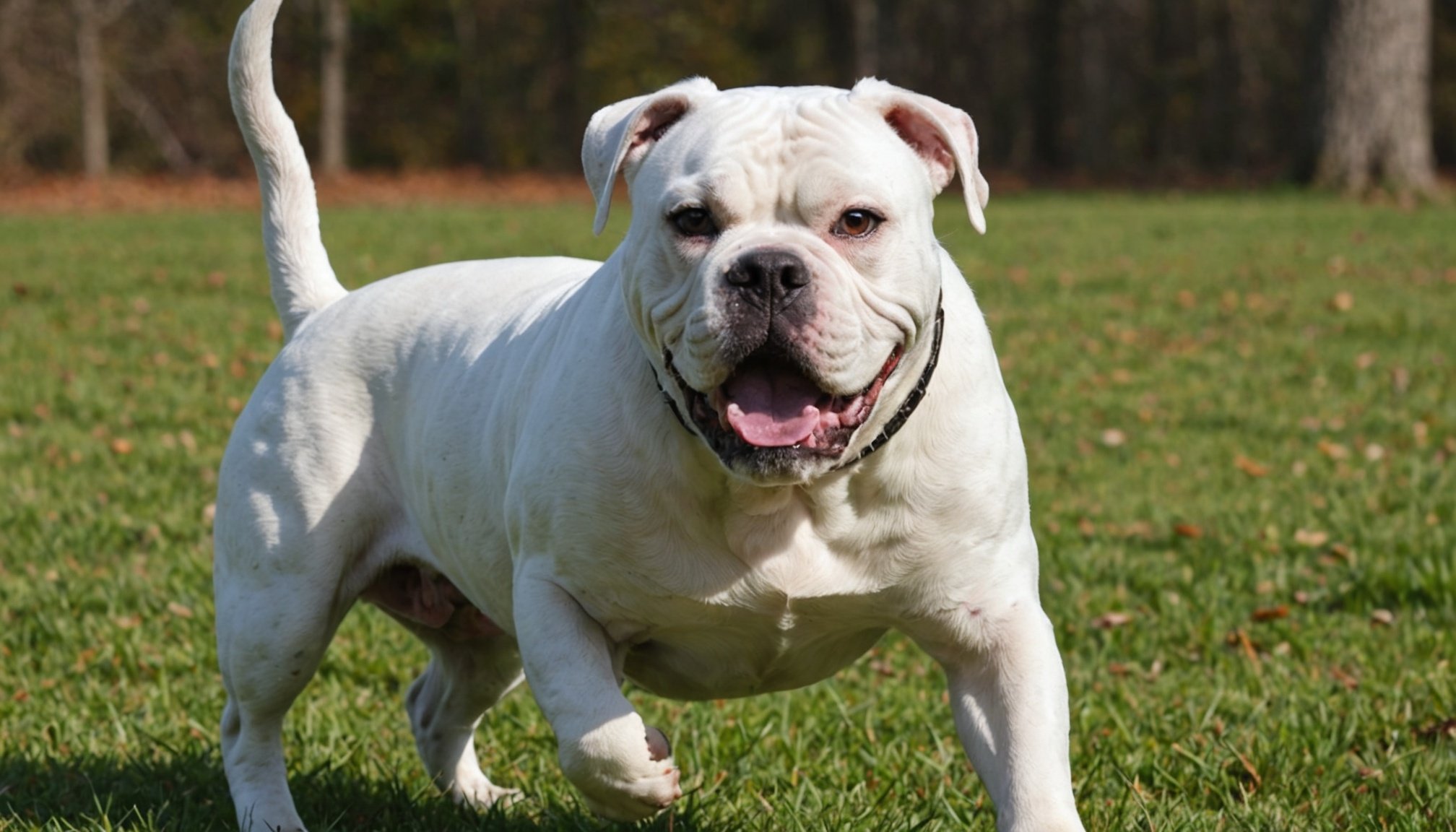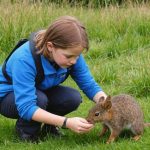Understanding Fear-Based Aggression in American Bulldogs
Fear-based aggression is a defensive behavior exhibited by dogs, including American Bulldogs, when they perceive a threat. Unlike other forms of aggression, it stems from a fearful space, wherein the dog reacts to protect itself. Recognizing this behavior is crucial for owners, as it can manifest in various ways such as growling, snapping, or biting when the dog feels cornered or threatened.
Various psychological factors contribute to fear-based aggression. An understanding of these factors is essential for managing the behavior effectively. Fear-based aggression can often root from a negative experience or lack of socialization as a puppy. A dog’s psychological makeup, previous traumatic experiences, and genetic predispositions can all influence its behavior. Understanding these underlying causes provides insight into why an American Bulldog might react aggressively.
A lire également : Elevate your dog's health with fresh, nutritious meals
Common triggers for fear-based aggression include the presence of strangers, loud noises, or sudden movements. Situations that are unpredictable or unfamiliar can heighten anxiety, prompting an aggressive response as a mechanism of self-defense. By identifying these triggers, owners can develop strategies to desensitize their pets and reduce the occurrence of aggressive incidents. Implementing a consistent routine and positive reinforcement can significantly aid American Bulldog behavior management, promoting a more stable and relaxed environment for the pet.
Effective Training Techniques for Managing Fear-Based Aggression
When addressing fear-based aggression, engaging with well-structured training techniques is crucial. Implementing positive reinforcement not only encourages desired behaviors but also builds trust and confidence between the handler and the animal. Using positive reinforcement, such as treats or praise, can effectively guide an animal towards more favorable behaviors by rewarding them each time they respond correctly.
Cela peut vous intéresser : Top Strategies for Safeguarding Floppy-Eared Breeds like Cocker Spaniels from Ear Infections
In training, start with small, manageable steps. Initially, practice basic obedience exercises like sit and stay to establish control. Gradually introduce exercises specifically designed to minimize aggression. For instance, if a certain trigger causes aggression, employ a step-by-step guide by slowly exposing the animal to that trigger in a controlled and calm setting.
Desensitization and counter-conditioning are advanced techniques often used in behavior modification. Desensitization involves exposing an animal to the stimulus that causes aggression, starting at a very low intensity and gradually increasing as the animal becomes more comfortable. On the other hand, counter-conditioning aims to change the emotional response to the trigger. If the trigger used to elicit fear or aggression, through counter-conditioning, it might eventually provoke a calm or positive reaction.
By consistently applying these techniques with patience and perseverance, you can help mitigate aggressive responses driven by fear, creating a safer and more harmonious environment.
Behavioral Modification Strategies
Behavioural modification in dogs requires a comprehensive approach tailored specifically to each dog’s unique needs. A successful plan involves understanding and addressing both anxiety reduction and aggression management.
Beginning with a tailored behaviour modification plan, it’s essential to conduct a thorough assessment of the dog’s behavioural patterns. Identifying specific triggers of anxiety or aggression enables the formulation of effective strategies. It’s crucial to incorporate both immediate interventions and long-term solutions to ensure lasting change. This might involve positive reinforcement techniques, desensitisation to specific stimuli, or even controlled exposure to reduce anxiety.
Creating a safe and comfortable environment is another critical component. Ensuring that the dog’s surroundings minimise stressors can significantly aid in anxiety reduction. Providing a predictable routine and establishing safe zones where the dog feels secure can enhance the effectiveness of behavioural modifications.
Monitoring progress is vital. Consistent observation allows adaptations in strategies as needed, catering to changes in the dog’s behaviour. Behavioural progress isn’t always linear, and what works initially may need adjustments to sustain improvements.
Ultimately, integrating these strategies will foster a harmonious environment for both anxiety reduction and aggression management, contributing to a more balanced and happier companion.
Expert Insights and Advice
When managing dog aggression, seeking expert advice from professional dog trainers can be incredibly valuable. They offer tailored strategies that address specific aggression triggers and support positive behavioural changes. Dog trainers recommend identifying the root cause of aggression, such as fear or territorial behaviour, and using positive reinforcement techniques to encourage desired behaviours.
It’s equally crucial to consult a veterinarian if you notice sudden aggression or unusual behaviours in your dog. Health issues, including pain or neurological problems, might manifest as aggression. Veterinarian input helps determine whether medical conditions contribute to your dog’s behaviour and guide you to appropriate treatments or interventions.
In some cases, behavioral therapy may be necessary. Professional trainers or animal behaviourists can provide insight into your dog’s psychological state. They develop customised plans that focus on modifying problematic behaviours in a supportive environment. If aggression persists despite training efforts, seeking professional help ensures your pet receives the care it needs and helps maintain safety for everyone involved.
By relying on expert advice and working closely with professionals, dog owners can effectively address and manage their pet’s aggression, improving both their lives and their pets.
Success Stories and Community Resources
Throughout the world, American Bulldog owners have experienced countless success stories that highlight the unique charm and resilience of this breed. For example, one family shared how adopting an American Bulldog transformed their home with love and protection, turning a scared, abandoned pup into a loving protector. These stories underscore the breed’s ability to adapt and thrive in various environments.
Engaging with local support groups and communities plays a crucial role in maximizing the potential of owning an American Bulldog. Such communities provide a platform for sharing stories, advice, and support, easing the journey for both new and experienced owners. By connecting with other owners, individuals can learn hands-on tips for training, health care, and enjoying quality time with their pets.
For those seeking further education and understanding, there are numerous additional resources available. Books dedicated to American Bulldogs offer in-depth insights into the breed’s characteristics, training techniques, and care requirements. Online courses, often designed by canine experts, present an engaging and accessible way to delve deeper into raising well-adjusted and happy American Bulldogs.
By utilising these community resources and learning from others’ experiences, owners can ensure a positive experience for themselves and their beloved pets.











